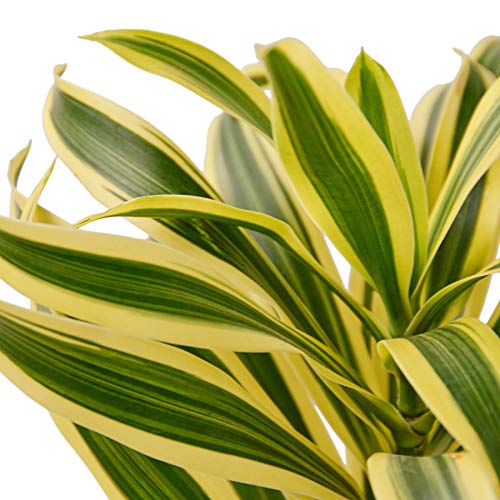This post contains affiliate links. If you buy something from one of our links we may earn a commission. Thanks
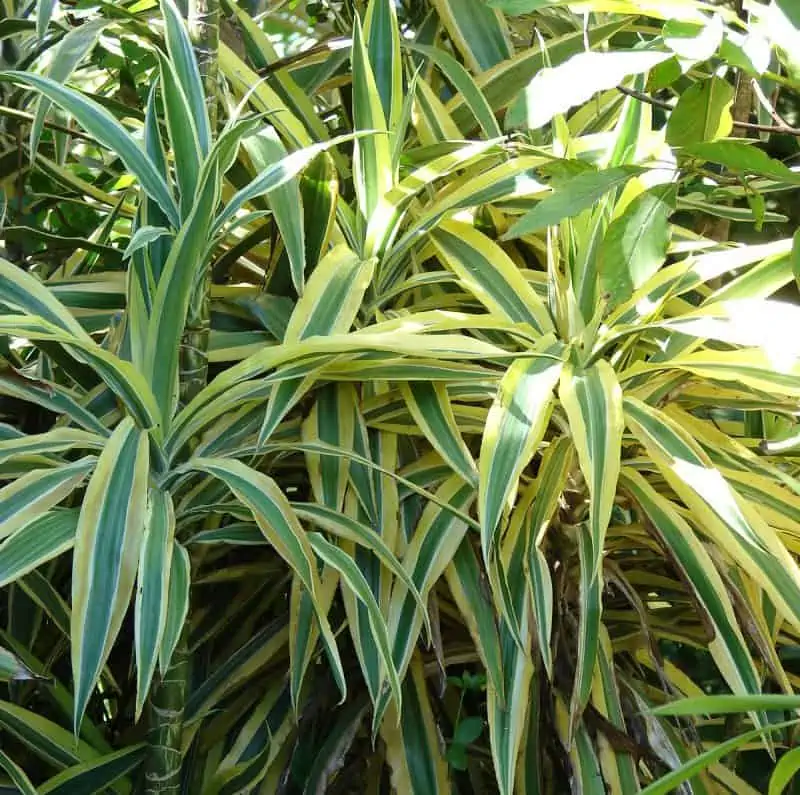
Are you looking for information about dracaena indoor plant care?
If you are looking for an easy-to-care-for indoor plant, dracaena is a great option.
Dracaena plant care indoors involves placing the plant in moderate to bright, indirect light and watering when the top inch of soil feels dry. Use well-draining soil and a pot with drainage holes. Fertilize sparingly, using a balanced liquid fertilizer every 6-8 weeks during the growing season.
The dracaena is a popular indoor plant that is known for its easy care. These plants can tolerate low light levels and require little water.
In this blog post, we will discuss the best way to care for your dracaena plants and how to keep them healthy and looking their best!
Dracaena Indoor Plant Care Introduction
Dracaena plants are a popular choice for indoor gardens, thanks to their easy care and striking appearance.
Dracaena (/drəˈsiːnə/) is a genus of about 120 species of trees and succulent shrubs. The name dracaena is derived from the romanized form of the Ancient Greek δράκαινα – drakaina, “female dragon”.The majority of the species are native to Africa, southern Asia through to northern Australia, with two species in tropical Central America. https://en.wikipedia.org/wiki/Dracaena_(plant)
Most dracaena varieties feature slender stems topped with a rosette of long, glossy leaves.
In addition to being decorative, dracaena plants are also known for their air-purifying properties.
Studies have shown that these plants can remove harmful chemicals from the air, including formaldehyde and benzene.
As a result, dracaena plants can help to create a healthy indoor environment.
With so much to offer, it’s no wonder that these plants are one of the most popular choices for indoor gardening.
The Benefits Of Growing Dracaena Plants
Dracaena plants are a type of evergreen shrub that is native to Africa. These plants are known for their striking appearance, with long, narrow leaves that can be green, yellow, have a yellow stripe, or are red in color.
Dracaena plants are also relatively easy to care for, making them a popular choice for both indoor and outdoor gardens.
In addition to their aesthetic appeal, dracaena plants also offer a number of benefits.
For example, they can help to purify the air by removing toxins such as formaldehyde and carbon monoxide.
They are also low-maintenance plants that require little watering or pruning. As a result, dracaena plants make an excellent addition to any home or office.
The Best Way To Care For Your Dracaena Plant
If you’re looking for a low-maintenance indoor plant, the dracaena is a great option.
Dracaena houseplants are tough plants that can thrive in a variety of conditions, making Dracaena care easy and ideal for busy households.
However, there are a few things to keep in mind if you want your dracaena to thrive.
Here are some tips for taking care of your dracaena plant:
- Dracaenas prefer bright, indirect light. If you can provide a spot near a window with filtered light, your plant will be very happy.
- Make sure to give your Dracaena enough light. While dracaenas can tolerate low-light conditions, they will grow best if given bright, indirect light.
- Allow the top inch of soil to dry out between watering. Overwatering is one of the most common problems with indoor plants, so it’s important to make sure you’re not overwatering your dracaena. Excess water can cause root rot.
- Water the plant regularly, but be sure to allow the soil to dry out between waterings. Over-watering can lead to root rot, so it’s important to err on the side of caution.
- Flouride toxicity Some varieties are sensitive to fluoride toxicity from tap water. This can cause brown leaf tips and leaf margins. If your city adds this use distilled water or RO water or consider a filter for your tap.
- Feed your dracaena every few months with a general-purpose fertilizer. Fertilize monthly during the growing season.
- A balanced liquid fertilizer will provide the nutrients your dracaena needs to stay healthy and thrive.
With just a little bit of care, your dracaena can be a beautiful and long-lasting addition to your home.
Dracaena Plant Varieties
If you’re looking for a unique and eye-catching houseplant, you can’t go wrong with a dracaena. There are many tropical plants in the dracaena genus to choose from.
Also known as the “dragon tree,” this tropical plant comes in a wide variety of shapes, sizes, and colors.
One of the most popular varieties is the dracaena marginata, which boasts long, slender leaves with crimson margins. Shown below.
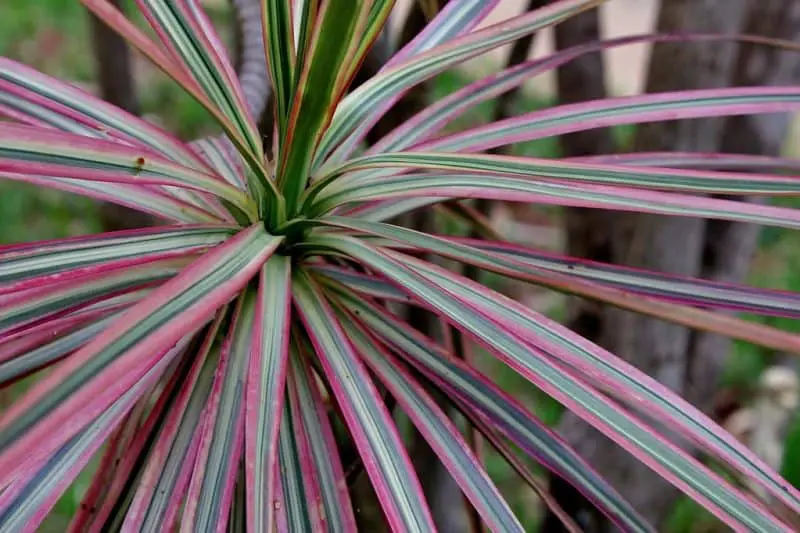
Another popular option is the dracaena sanderiana, or “lucky bamboo.” This species is native to Africa and Asia and is often used in Feng Shui.
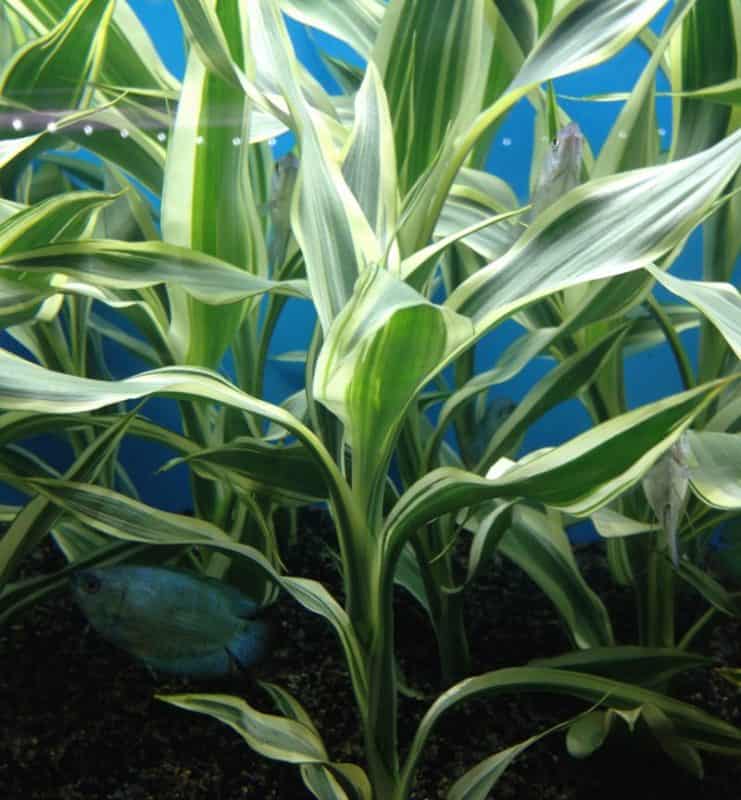
Lucky bamboo is easy to care for and can thrive in a wide range of environments, making it a great choice for beginners.
If you’re looking for something a little more unusual, you might also want to try the dracaena fragrans, or “corn plant.” This variety is named for its large, textured leaves, which resemble cornstalks.
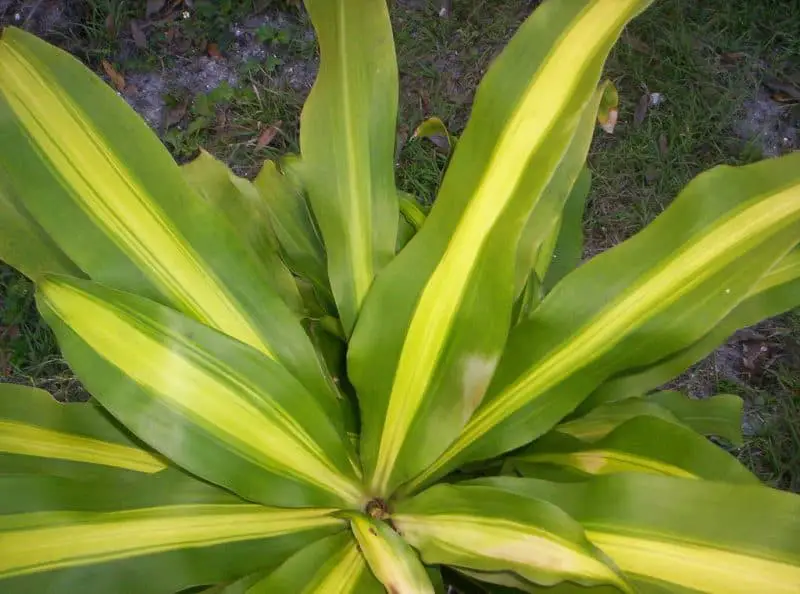
Song Of India is another popular variety of Dracaena and is considered very easy to grow.
No matter which type you choose, you’re sure to enjoy the beauty and simplicity of the dracaena plant.
Dracaena Is Poisonous To Pets
If you’re looking for a low-maintenance houseplant that will add a touch of tropical flair to your home, you may be considering a dracaena.
But before you bring one home, you might be wondering if it’s safe to have around pets.
It’s true that members of the dracaena family are poisonous to cats and dogs.
If you have pets, it’s best to err on the side of caution and either avoid this plant or make sure they are in a place where your pets can’t eat any variety of dracaena.
Pruning Dracaena
Dracaena plants get tall. Depending on the species they can grow 2-8 feet tall. If you want to keep the height down you can prune them.
Regardless of which species of Dracaena you have, the basic steps for pruning are the same.
First, it’s important to plan your cuts. Dracaenas typically have a lot of nodes on each stem, so you don’t need to be too precise about where you cut.
Simply decide how much of the plant you want to remove and make a rough guide for your cuts.
Next, sterilize a sharp garden knife or shears and use it to cut through the stem at a 45-degree angle above a node.
Once all of your cuts are complete, continue to provide your Dracaena with normal care.
New growth will come from this node but be aware it can take several weeks for this to happen.
Propagating Dracaena
Dracaena is a type of plant that can easily be propagated by taking stem cuttings.
When propagating dracaena through cuttings, one of the simplest methods is to remove the crown.
This involves cutting just below the bunch of leaves at the top of the plant, making sure to include at least one node.
The cut end can then be placed in water and kept in a warm spot. With proper care, the roots should start to grow and you will get a new plant relatively quickly.
Alternatively, I like to root cuttings in coco coir. I like to leave several nodes below the crown.
Then I dip the cut end in rooting powder. While the rooting powder is not absolutely necessary it can help speed up the rooting process.
It is important to keep the cutting warm and moist throughout the entire rooting process.
Dracaena is a hardy plant, but they need proper care when propagating in order to ensure successful growth of the cutting.
Dracaena Pests And Diseases And How To Treat Them
Like all plants, there are a number of pests and diseases that can affect dracaena plants. Some of the most common include:
Mealybugs: These are small, white insects that can suck the sap out of the plant, causing yellowing leaves and stunted growth. They can be controlled with a strong spray of water or by wiping them off with a cotton swab dipped in rubbing alcohol.
Scale: These are small, hard-bodied insects that can attach themselves to the stems and leaves of the plant. They can be controlled with an insecticide or by wiping them off with a cotton swab dipped in rubbing alcohol.
Spider mites: These are tiny, spider-like insects that can spin webs on the undersides of the leaves. They can cause yellowing leaves and stunted growth, and they can be controlled with insecticidal soap, neem oil or by wiping the leaves off with a damp cloth.
Root rot: This is a common problem that can occur if the plant is overwatered or if the soil is too wet and has poor drainage. The roots of the plant will become diseased and may turn black and mushy. To treat root rot, it is important to reduce watering and improve drainage to prevent the soil from remaining too wet.
To prevent pests and diseases from affecting your dracaena plant, it is important to provide it with the care it needs, including proper watering, lighting, and fertilization. It is also important to regularly inspect the plant for signs of pests or disease and take action as needed.
FAQ
Is Dracaena A Good Indoor Plant?
Dracaena is a popular houseplant because it is easy to care for and can thrive in a variety of indoor conditions. It is known for its ability to purify the air and remove toxins, making it a good choice for improving the air quality in your home.
It is also a relatively low-maintenance plant, requiring only occasional watering and occasional fertilizing to keep it healthy.
However, it is important to keep in mind that dracaena plants are sensitive to over-watering, so be sure to use well-draining soil and allow the soil to dry out between waterings.
Overall, dracaena can be a good choice for a houseplant if you are looking for a plant that is easy to care for and can help improve the air quality in your home.
Are Dracaenas Hard To Care For?
Dracaena plants are considered to be low-maintenance plants that are easy to care for. They are tolerant of a wide range of indoor conditions and can thrive in a variety of lighting environments, making them a good choice for those who do not have a lot of experience growing plants.
It is still important to provide them with the care they need to stay healthy. This includes watering them regularly, providing them with sufficient light, and protecting them from extreme temperatures.
It is important to keep an eye out for signs of stress or illness, such as yellowing leaves or wilting, and take action if necessary.
Overall, dracaena plants can be a good choice for those who are looking for a relatively low-maintenance houseplant that is easy to care for.
Do Dracaena Plants Need Sunlight?
Dracaena plants can tolerate low light conditions, but they do best with bright, indirect sunlight. They can also tolerate some direct sunlight.
It is important to avoid placing them in a location where they will receive full sun for extended periods of time, as this can cause the leaves to yellow and the plant to become stressed.
If you are growing dracaena indoors, a location near a window that receives bright, indirect light is usually a good choice.
If you are growing dracaena outdoors, a location that receives morning sun and afternoon shade is usually ideal. It is important to pay attention to the lighting conditions in the location where you are growing your dracaena plant and adjust its care accordingly to ensure it stays healthy.
How Often Do You Water A Dracaena Plant?
In general, dracaena plants should be watered when the top inch or so of soil is dry. As a general rule of thumb, watering a dracaena plant once a week is usually sufficient, but you may need to water it more frequently in hot, dry conditions or less frequently in cooler, wetter conditions.
It is important to avoid letting the soil dry out completely or letting the plant sit in standing water, as too much water can cause root rot.
If you are not sure whether your dracaena plant needs watering, check the moisture level of the soil before watering. You can do this by sticking your finger about an inch into the soil. If the soil feels dry at that depth, it is probably time to water the plant. If the soil feels moist, it is best to wait a few more days before watering.
Dracaena Indoor Plant Care Final Thoughts
There are many different varieties of dracaena plants, each with its own unique appearance.
The most popular type probably is the Dracaena marginata, which is characterized by its long, slender leaves.
The Dracaena fragrans, on the other hand, have shorter, broader leaves and are often used as indoor plants.
Other popular varieties include the dragon tree or Dracaena draco and the ribbon plant, Dracaena Sanderiana.
No matter what type of dracaena plant you choose, you’re sure to add a touch of beauty and style to your home or office.
With their striking foliage and elegant shapes, these plants can help to create a tranquil and inviting space.
Find out more about why you want to keep indoor houseplants: Benefits Of Keeping Indoor Plants For Improved Lifestyle (indoorvegetablegrower.com)




